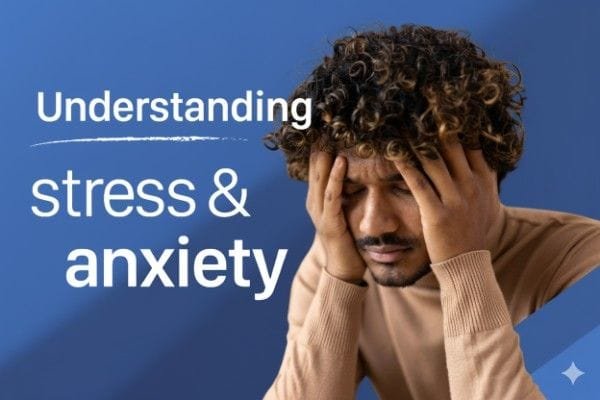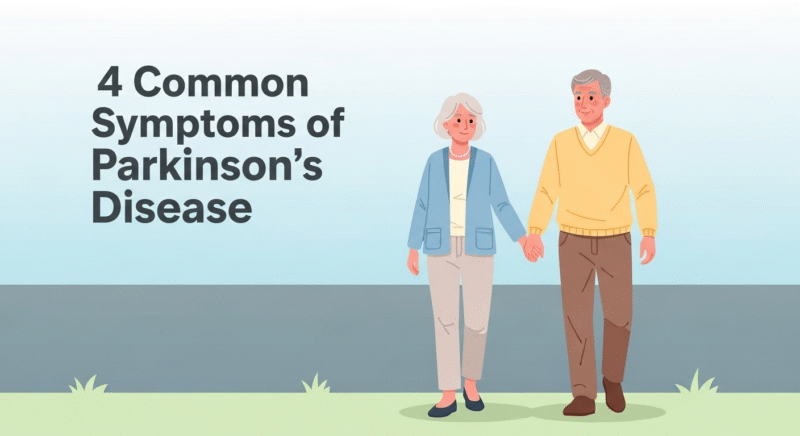The Rise of Anxiety and Mental Fatigue
In today’s busy and connected world, many people feel anxious every day. Work stress, social pressure, and too much information can make the mind feel like it’s always racing. The World Health Organization says over 264 million people around the world struggle with anxiety—and the number is still growing.
The Shift Toward Mindfulness and Mental Wellness
What was once seen as a mystical or spiritual practice has now entered the mainstream. Meditation is being embraced across the globe as a tool to reduce stress, manage emotions, and regain mental clarity. It’s no longer just about “zen monks” in temples—CEOs, students, athletes, and parents are turning to mindfulness as a form of daily self-care.
What Is Meditation?
Defining Meditation in Simple Terms
Meditation is the practice of training your attention and awareness. It’s not about emptying your mind or achieving a “blank state.” Instead, it’s about noticing thoughts, emotions, and sensations without reacting to them. It’s a workout for your brain—where the focus is mental clarity and emotional balance.
The Science Behind Meditation and the Brain
Scientific studies using MRI scans show that meditation physically changes the brain. Regular practice increases gray matter in areas linked to self-awareness and attention while reducing activity in the amygdala, the brain’s fear center. In short, meditation rewires your brain to be calmer and more focused.
How Meditation Impacts Anxiety and Focus
Anxiety thrives on racing thoughts and emotional reactivity. Meditation interrupts that cycle. It gives your nervous system a break, promotes slower breathing, and activates the body’s relaxation response. Over time, you build emotional resilience and sharper focus, even in high-pressure situations.
Benefits of Meditation for Beginners Immediate and Long-Term Benefits
Many beginners report feeling calmer after just one session. With consistent practice, meditation leads to:
- Reduced stress and anxiety
- Improved sleep
- Enhanced focus and productivity
- Greater emotional stability
- Better self-awareness
Emotional Regulation and Mental Clarity
One of meditation’s most valuable effects is helping you pause before reacting. Whether you’re dealing with a rude comment or overwhelming deadlines, mindfulness trains you to respond thoughtfully rather than impulsively.
5 Easy Types of Meditation for Beginners
1. Mindfulness Meditation
This form involves focusing on the present moment. You simply observe your thoughts, feelings, and bodily sensations as they arise—without judgment. It’s often practiced by sitting quietly and focusing on the breath.
2. Breathing Meditation
Breath is a powerful anchor. You focus your attention on your inhale and exhale. When your mind drifts (and it will), you gently bring it back to the breath.
3. Body Scan Meditation
This involves mentally scanning your body from head to toe, observing any tension, pain, or discomfort. It’s especially useful for promoting relaxation and improving body awareness.
4. Guided Visualization
This meditation uses mental imagery to create a sense of peace and relaxation. You might imagine walking through a forest or sitting beside a calm lake—guided by an instructor or app.
5. Loving-Kindness Meditation
Also known as Metta, this practice focuses on cultivating compassion for yourself and others. You silently repeat phrases like “May I be happy. May you be safe.” It’s powerful for reducing anger and enhancing emotional connection.
Guided Meditations for Anxiety and Focus
Benefits of Guided Sessions
For beginners, guided meditations are especially helpful. A gentle voice provides structure, making it easier to follow along. It removes the uncertainty of “Am I doing this right?” and helps you stay focused.
Where to Find the Best Free Guided Meditations
- YouTube (search for “10-minute anxiety meditation”)
- Insight Timer App
- Headspace (Free trial available)
- Calm App
- Rablid.com (soon launching free guided meditation library)
Tips for Getting the Most Out of Guided Practice
- Use headphones to limit distractions
- Choose a time when you won’t be interrupted
- Follow the voice, not your wandering thoughts
- Practice regularly for best results
How to Start Meditating (Without Overthinking It)
Create a Calm Space
You don’t need a meditation room. Just find a quiet corner, light a candle, or add a cushion. Make it your sacred space.
Start Small—2 to 5 Minutes
Set a timer for just 2–5 minutes. That’s enough to build a habit. Add time gradually as it becomes easier.
Set an Intention or Focus
Before starting, silently say, “I am here to feel calm,” or “I want to focus better.” This simple act brings clarity and motivation.
Common Mistakes Beginners Make and How to Avoid Them
Expecting Instant Results
Don’t expect a miracle after your first session. Meditation is a long-term investment in your mental well-being.
Struggling with “Clearing the Mind”
You’re not failing if you can’t stop thinking. The goal is awareness—not emptiness.
Being Inconsistent with Practice
Meditation works best when practiced regularly. Even 5 minutes daily has more impact than a 30-minute session once a week.
Using Meditation to Calm Emotional Triggers
Recognizing Triggers Without Judgment
Meditation helps you become aware of what triggers your anxiety. Instead of reacting, you learn to pause, observe, and release.
Using Breath as a Grounding Tool
When emotions rise, breathe slowly. Try this: inhale for 4 seconds, hold for 4, exhale for 6. Repeat. You’ll notice your heart rate slowing and thoughts settling.
How Meditation Improves Focus and Productivity
Clearing Mental Clutter
A cluttered mind struggles to prioritize. Meditation declutters your thoughts and enhances decision-making.
Sharpening Attention Span
Studies have shown that just 4 days of mindfulness meditation can improve attention and memory. Over time, your brain becomes better at tuning out distractions.
🎧 Lead Magnet: Free Meditation Audio Track
Why Audio Helps Beginners
Audio meditations provide gentle guidance, which is especially useful when you’re just starting out and unsure what to do.
How to Use the Free Track Effectively
- Choose a quiet time (morning or before sleep)
- Sit or lie down comfortably
- Use headphones for immersive experience
- Revisit the audio daily for a week
👉 Download your FREE meditation audio track at Rablid.com
🧘♂️ Lead Magnet: 5-Day Mindfulness Challenge PDF
What’s Inside the Challenge
Each day introduces a simple meditation exercise:
- Day 1: Breathing Space (3 minutes)
- Day 2: Body Scan Awareness
- Day 3: Mindful Eating Practice
- Day 4: Observe Your Thoughts
- Day 5: Self-Love and Compassion Session
How to Stay Motivated Over 5 Days
Print the PDF and stick it where you can see it. Check off each day and reflect on how you feel after each session.
👉 Get your FREE 5-Day Challenge PDF at
Tools & Apps to Support Your Meditation Journey
Free and Paid Options
- Free: Insight Timer, Smiling Mind, UCLA Mindful App
- Paid: Calm, Headspace, Balance App
Daily Reminders and Progress Tracking
Use apps or phone reminders to stay consistent. Tracking your streak keeps you motivated!
Meditation for Busy People
How to Meditate in Just 60 Seconds
Short on time? Try this:
- Inhale for 4 seconds
- Hold for 4
- Exhale for 6
- Repeat 3 times
That’s one minute of calm—anytime, anywhere.
Incorporating Mindfulness into Daily Tasks
Try being present while:
- Drinking coffee
- Walking
- Washing dishes
- Brushing your teeth
Mindfulness isn’t about time—it’s about presence.
Real-Life Success Stories from Beginners
Overcoming Anxiety Through Daily Practice
“I used to wake up with tightness in my chest every morning. Just five minutes of meditation a day has changed my mornings completely.” – Priya, 29
Boosting Focus Without Medication
“I have ADHD and was skeptical at first. But guided meditations have helped me stay more focused at work than I ever imagined.” – Jordan, 34
Conclusion: Your First Step Toward a Calmer Mind
You don’t need fancy tools or years of experience to start meditating. Just a few minutes, a quiet space, and a willingness to show up for yourself is enough.
Meditation isn’t about perfection—it’s about presence. When you commit to even the smallest practice, you’re investing in a calmer, more focused, and emotionally resilient version of yourself.
So take a breath. You’re already on your way.
FAQs
Q: How long should I meditate as a beginner?
A: Start with 2–5 minutes daily. Increase gradually as it becomes part of your routine.
Q: Can meditation help with anxiety?
A: Absolutely. It activates your body’s relaxation response and helps regulate emotional reactions.
Q: I can’t stop thinking. Am I doing it wrong?
A: Not at all. Meditation is about noticing thoughts—not eliminating them.
Q: Do I need to sit cross-legged on the floor?
A: Nope! You can sit on a chair, lie down, or even stand—whatever is comfortable.
Q: When is the best time to meditate?
A: Mornings are ideal, but any time you can be still and undistracted works.






